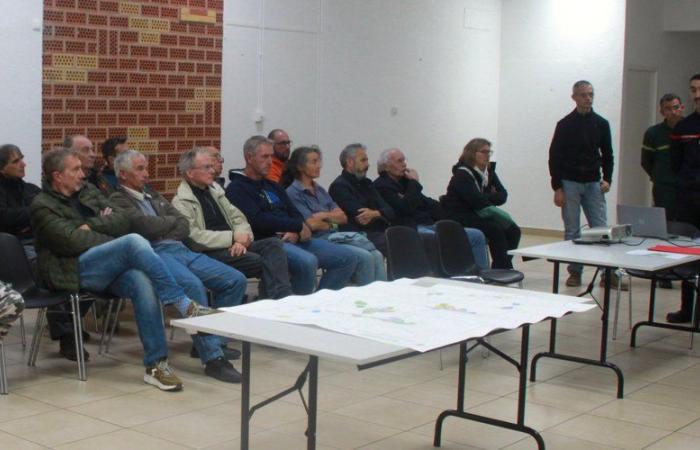Residents were invited to a public meeting aimed at supporting them in their Legal Clearing Obligations (OLD).
With an area of more than 1,200 hectares, two thirds of which are covered by scrubland or forests, the town has an exposure to fire risk considered “high to very high”. Its habitat here grouped in villages or hamlets, but elsewhere dispersed in these farmhouses typical of the Aspre region, makes it all the more vulnerable to possible forest fires and requires, of course, increased vigilance. In this context, the legal clearance obligations, the first effective barrier in the fight against fires, have been the subject of support since spring 2023 from the ONF and the DDTM in order to help the municipality and individuals to achieve this essential self-protection.
The purpose of the public meeting was to take stock of the progress of the work. It also made it possible to distil advice, lessons and analyzes through the voices of Romain Ducup of Saint-Paul and Olivier Soulat for the ONF and the DDTM, and of Lieutenant Bataille who represented the Sdis of the P.-O. Coincidentally, this meeting took place two months to the day after the violent fire which had burned part of the territory of Camélas and that of Castelnou last September and which was, of course, to be found in the backdrop of the evening.
Paths for firefighters
As a preamble, Mayor Roger Bort welcomed the great response of the entire village to carry out the clearing works. He reserved ample space in his speech to warmly thank the fire brigade as well as the State services for the exceptional resources employed in this fire in September which was fueled by “extremely unfavorable weather conditions “.
Following this, the speakers demonstrated how clearing is an integral part of tactical reasoning in fighting fires. Indeed, if “90% of cleared homes are protected from fire“because the flames, deprived of fuel, then bypass the building, regular maintenance of the vegetation also makes it possible to maintain an operational network of access roads for the passage of large fire brigade vehicles. Their speeches thus shed light on the logic of the OLD through images, real-life examples and practical details. Numerous exchanges followed between the speakers and the audience.
Finally, at the end of the meeting, residents were invited to approach a map of the clearing plan produced by the ONF, available at the town hall and intended to support individuals by delimiting the areas of each concerned by the OLD .






